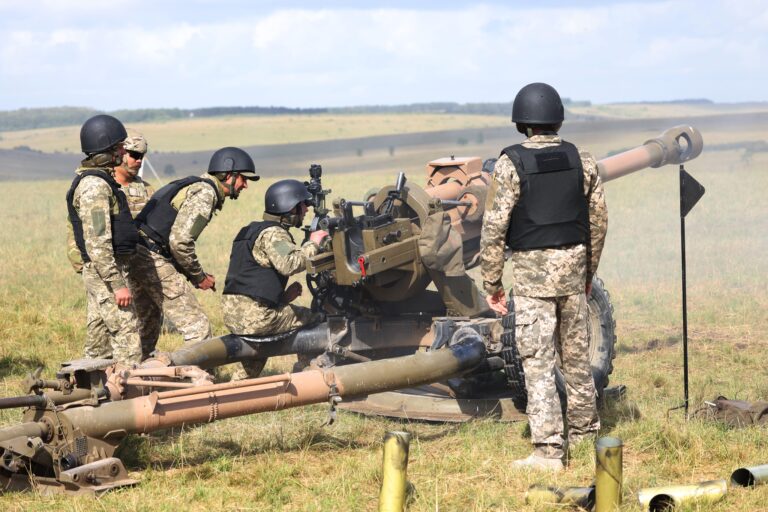New Zealand and Australia are moving to strengthen their military cooperation in response to heightened regional tensions following China’s recent live-fire naval exercises. The joint drills, conducted near disputed waters, have raised concerns among Pacific neighbors about Beijing’s growing assertiveness. In a coordinated effort, both countries are exploring ways to deepen strategic ties and enhance defense collaboration to ensure security and stability in the Indo-Pacific region, according to reports from AP News.
New Zealand and Australia Boost Defense Cooperation in Response to Regional Security Challenges
In a strategic response to escalating regional tensions, New Zealand and Australia have announced significant steps to deepen their defense collaboration. The move comes amid growing concerns over military activities in the Pacific, particularly following a high-profile Chinese live-fire naval exercise that signaled increased assertiveness in the region. Both countries are prioritizing enhanced intelligence sharing, joint military drills, and coordinated maritime security operations to ensure stability and maintain a balance of power in their shared neighborhood.
Key measures outlined by defense officials include:
- Regular biennial joint naval exercises to improve interoperability and readiness
- Expanded intelligence-sharing protocols focused on emerging threats
- Investment in advanced maritime surveillance technology along crucial sea lanes
- Strengthened cyber defense collaboration to counter hybrid threats
| Area of Cooperation | Planned Initiatives | Timeline |
|---|---|---|
| Naval Exercises | Joint drills in the Coral Sea and Tasman Sea | Starting Q3 2024 |
| Intelligence Sharing | Enhanced real-time data exchange network | Mid-2024 |
| Surveillance Tech | Deployment of unmanned maritime drones | Late 2024 |
Analyzing the Impact of Chinese Naval Exercises on Indo-Pacific Stability
China’s recent live-fire naval exercises in the Indo-Pacific have introduced a palpable tension among regional stakeholders, prompting immediate responses from affected nations such as New Zealand and Australia. These exercises, characterized by aggressive maneuvers and demonstration of advanced missile capabilities, underscore Beijing’s intent to assert dominance across key maritime routes. The resulting strategic recalibration has spurred Canberra and Wellington to deepen their military collaboration, highlighting concerns over freedom of navigation and the stability of established international norms.
Experts note several critical implications linked to these developments:
- Enhanced Regional Surveillance: Joint patrols and intelligence-sharing initiatives are on the rise, aimed at real-time monitoring of maritime activities.
- Defense Integration: Improved interoperability through combined training exercises seeks to fortify shared security objectives.
- Diplomatic Messaging: Coordinated defense postures serve as a deterrent signal targeting potential unilateral actions altering the status quo.
| Country | Response Mechanism | Strategic Focus |
|---|---|---|
| New Zealand | Joint exercises with Australia | Maritime security and intelligence sharing |
| Australia | Increased naval deployment | Deterrence and freedom of navigation |
| China | Live-fire drills | Projection of naval power |
Strategic Recommendations for Enhancing Joint Military Operations and Intelligence Sharing
Deepening interoperability between New Zealand and Australian forces is essential to counterbalance rising regional tensions following recent Chinese naval demonstrations. This includes joint training exercises that simulate multifaceted scenarios-from amphibious assaults to cyber defense-ensuring both militaries can respond cohesively under real combat conditions. Moreover, adopting standardized communication protocols and secure data-sharing platforms will enhance operational coordination, reducing risks of misinterpretation during high-stakes missions.
Enhanced intelligence collaboration is equally critical. Establishing a dedicated bilateral intelligence hub would facilitate real-time exchange of actionable insights, from maritime movement to cyber threat detection. Key strategic moves may include:
- Implementing joint satellite surveillance programs to monitor maritime zones;
- Coordinating signals intelligence to track potential adversary electronic activities;
- Sharing cyber threat intelligence to pre-empt and neutralize coordinated attacks;
- Regular intelligence briefings and secure video conferences to maintain constant situational awareness.
| Strategic Focus | Key Initiative | Expected Outcome |
|---|---|---|
| Joint Training | Multinational exercises with live-fire components | Improved tactical synergy and readiness |
| Information Sharing | Secure bilateral intelligence hub | Faster threat detection and response |
| Communication | Unified protocols and encrypted channels | Reduced operational miscommunication |
| Cybersecurity | Joint cyber defense initiatives | Enhanced resilience against cyberattacks |
Concluding Remarks
As New Zealand and Australia move to strengthen their military partnership in response to shifting regional dynamics, their coordinated approach underscores a shared commitment to maintaining stability and security in the Indo-Pacific. With China’s recent live-fire naval exercises heightening tensions, the deepening defense ties between these neighbors signal a strategic recalibration aimed at deterring potential threats and safeguarding their mutual interests. Observers will continue to watch closely as these developments unfold amid an increasingly complex security environment.




